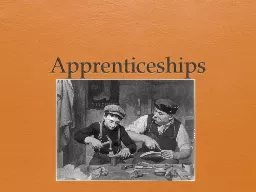PPT-What is the effectiveness of fully on-the-job training for carpentry apprenticeships?
Author : tabitha | Published Date : 2023-11-03
Barry Wright OctoberVET 7 November 2018 Overview Definition Questions Purpose Context and background Related work Methodology Findings Recommendations 2 Purpose
Presentation Embed Code
Download Presentation
Download Presentation The PPT/PDF document "What is the effectiveness of fully on-th..." is the property of its rightful owner. Permission is granted to download and print the materials on this website for personal, non-commercial use only, and to display it on your personal computer provided you do not modify the materials and that you retain all copyright notices contained in the materials. By downloading content from our website, you accept the terms of this agreement.
What is the effectiveness of fully on-the-job training for carpentry apprenticeships?: Transcript
Download Rules Of Document
"What is the effectiveness of fully on-the-job training for carpentry apprenticeships?"The content belongs to its owner. You may download and print it for personal use, without modification, and keep all copyright notices. By downloading, you agree to these terms.
Related Documents














